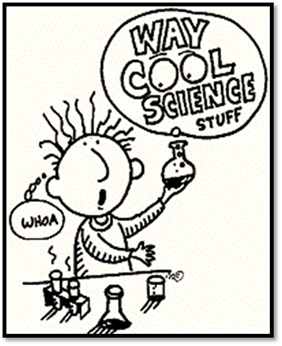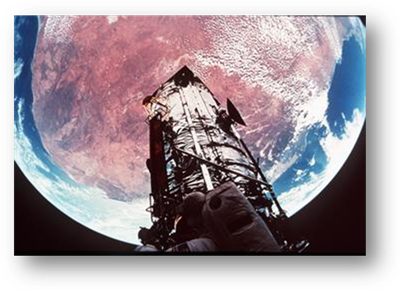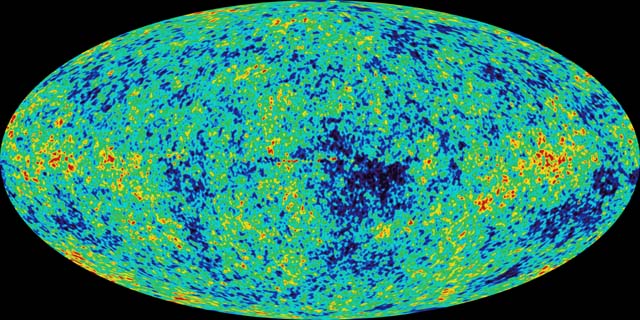LAB SAFETY AND HISTORY OF THE UNIVERSE
Section
A: Lab Safety
Before you read this unit, complete the following
mind-map activity on lab safety. Use your prior knowledge of lab safety and
describe it on the mind map.
(Attachment 1: Lab Safety Mind
Map)

When conducting laboratory experiments, lab safety
should always be your main priority. Follow these guidelines to ensure the
safety of yourself and others around you whenever you do an experiment.
Clothing
and Personal Grooming
Wear well-fitting
clothing. Avoid wearing loose or baggy items, as these could get in the way.
Wear goggles, gloves, apron, and/or lab coat as specified in each experiment.
If you have long hair, pull it back and secure it.
Procedures
Read and follow the
procedures for every laboratory experiment. It is important to read the entire
experimental procedure before starting any work on the experiment. If you are
not sure what something means, ask for help or further directions before
proceeding with the experiment.
Laboratory
Equipment
Learn how to use each
piece of equipment safely and properly; do not play with the equipment. Never
touch or taste experiment ingredients unless told to do so.
Cleanliness
Upon completing the
experiment, clean up your equipment and work space. Make sure to wash your
hands after every experiment.
Behavior
Demonstrate responsible
behavior at all times. It is crucial to be aware of your own safety and the
safety of those around you. Avoid running and horseplay in the lab setting.
Now, complete the following activity on lab safety.
(Attachment 2: Lab
Safety Posters Activity)
 Please
answer questions 1 through 6 in the question section below before moving on to
Section B.
Please
answer questions 1 through 6 in the question section below before moving on to
Section B.
Section
B: History of the Universe
Formation of the Universe
A science topic that has
been debated for centuries is the formation of the universe. Several theories
have been proposed, shared, studied, and debated over time. One generally
accepted theory is known as the Big Bang theory. This theory
proposes that the universe began with a big bang (explosion or expansion) and
has been expanding ever since. The origin of the big bang is one of the
greatest mysteries of all time. Theoretical physicists and cosmologists reveal
how our understanding of the universe has changed during the twentieth century
and ponder how something as complex as our universe could come from nothing.

Evidence
for the Big Bang Theory
According to the Big Bang theory, the universe
expanded quickly and then cooled enough for atoms to form. Gravity pulled the
atoms toward one another to form gas clouds that eventually gave birth to
stars. This is how galaxies began to develop over long periods of time. As time
goes on, the galaxies continue to move away from one another at great speeds,
and as thus, the universe continually expands.
There are several types of evidence which support the
Big Bang theory:
-
Hubble’s Law
-
redshifts
-
cosmic
microwave background radiation.
Hubble’s
Law explains that galaxies which are further away from
Earth are moving at proportionally greater velocities. The further a galaxy’s distance from Earth, the greater its redshift.
Hubble theorized that the universe’s dominant motion has a smooth expansion factor,
which is now called the Hubble constant. He originally believed it to be about
500 km/sec/Mpc (kilometers per second per megaparsec). The value today remains
uncertain, but is believed to be closer to a range of 45-90 km/sec/Mpc. Note: a
parsec is used to measure the large distances from our galaxy to neighboring
galaxies and clusters. A megaparsec is one million parsecs.
This chart shows possible scenarios for universal
expansion, with the red curve supporting Hubble’s Law: http://wmap.gsfc.nasa.gov/universe/bb_concepts_exp.html
Redshift
is based on an understanding of the Doppler Effect. The Doppler Effect is the
apparent difference between the frequency at
which sound or light waves leave a source and that at which they reach an
observer, caused by relative motion of the observer and
the wave source. For example, a fire truck is moving toward you. As
it approaches, the pitch of the siren appears to get higher, and as it drives
away, the pitch seems to be somewhat lower. If you are to apply the principle
to moving light, an object that is rapidly moving closer will have more of a
blue appearance, while an object moving away will emit a red light. This is
known as redshifting. As celestial objects and galaxies move away from the
Earth, they displace red light on the spectrum. A longer redshift shows a
greater speed of recession from Earth.
Follow the links below for more information on the
Doppler Effect and Redshift.
Doppler Effect, explained: http://www.exploratorium.edu/origins/hubble/tools/doppler.html
Doppler Effect, examples: http://www.pbs.org/wgbh/nova/universe/moving_nf_01.html
***Click through and read all four pages associated
with the above link.***
Britannica
Video
The username and password for Britannica is as follows: (username:
vla) (password: student)
Redshift, explained: http://school.eb.com/levels/high/article/62957
Khan Academy Video
Redshift, example: https://www.khanacademy.org/science/cosmology-and-astronomy/universe-scale-topic/big-bang-expansion-topic/v/red-shift
Cosmic
microwave background radiation (or CMB radiation) is a
remnant glow of radiation from the Big Bang. It is often referred to as
“leftover light.” About 380,000 years after the Big Bang, the universe became
transparent as ionized hydrogen and helium bonded with electrons to form
neutral atoms. This allowed light to travel freely. Closer to when the CMB
radiation was initially released, it was emitted as visible and ultraviolet
light. But as the universe has expanded and redshifted over billions of years,
the wavelengths became longer until the present, when it appears in the form of
microwave radiation. It was Arno Penzias and Robert Wilson who discovered CMB
radiation when using their microwave radio telescope in 1964. The radiation
energy is uniform across all areas of the observable universe, and the
temperature is about -270 degrees Celsius, or only 2.7 degrees above absolute
zero.

Map of CMB radiation
WATCH THIS Video: “The cosmic microwave background: A new view from the South Pole”
https://www.khanacademy.org/partner-content/amnh/the-universe/universe/v/cmb-new-view-south-pole
Unit
Vocabulary Review
Click on the Quizlet icon below to access
the quizlet.com vocabulary flash cards. Review the vocabulary before completing
your assessment.
Extension:
Related article
http://www.astronomy.com/news/2014/11/gravity-may-have-saved-the-universe-after-the-big-bang
 After completing all unit
activities, answer questions 7-15 in the question section below.
After completing all unit
activities, answer questions 7-15 in the question section below.
